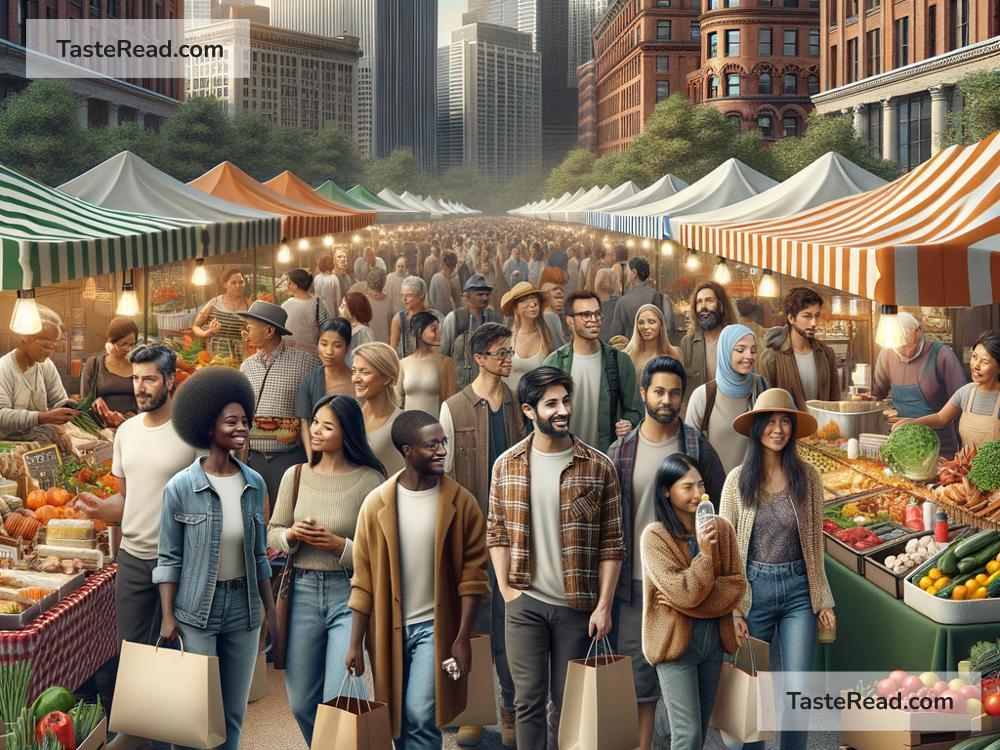The Impact of Urbanization on Food Choices
Urbanization is the process of more people moving to cities and towns from rural areas. It happens all around the world as countries grow and develop. Cities offer jobs, education, healthcare, and many other opportunities that attract people. While urbanization is a sign of progress, it also changes how people live—one big area it affects is food choices. In this blog, we’ll explore how urbanization impacts what we eat and why it matters.
How Urbanization Changes Food Habits
When people live in the countryside, food choices are often linked to farming, local traditions, and availability of fresh produce. Many rural families grow their own food or buy fresh ingredients from local markets. In cities, however, life moves faster, and the way people eat changes to fit a different lifestyle.
-
Shift to Processed Foods
As urban areas grow, supermarkets and stores offering packaged, processed foods become more common. These foods are convenient for city dwellers who have busy lives and little time to cook. Instant noodles, frozen pizzas, canned soups, and ready-made meals are often preferred over homemade food because they save time. However, processed foods often contain high levels of sugar, salt, and unhealthy fats, which can negatively impact health. -
Increased Fast Food Consumption
Fast food restaurants thrive in cities because they offer affordable, quick meals. For people working or studying, grabbing a burger, fries, or a slice of pizza is easier than preparing food at home. While fast food may taste good, it frequently lacks essential nutrients and can lead to health problems like obesity and heart disease if consumed too often. -
Decline in Traditional Diets
Urbanization can lead to the loss of traditional food culture. In rural areas, meals are often prepared using recipes passed down through generations, featuring locally grown ingredients. But in cities, imported packaged foods and global restaurants may replace traditional meals. As people embrace modern lifestyles, traditional foods may be seen as outdated or inconvenient.
Access to a Wider Variety of Food
Urbanization doesn’t only have negative effects on food choices; it also brings advantages. Cities give people access to food from all over the world. You can try sushi from Japan, tacos from Mexico, or pasta from Italy—all without leaving your city. This variety lets people explore new cuisines and expand their taste preferences.
Additionally, cities often have supermarkets stocked with international food products, organic produce, and health-focused items. Many urban areas are also home to farmers’ markets and specialty stores where people can find fresh, local food. For those focused on eating healthy, living in a city can provide great options.
The Role of Income and Accessibility
Urbanization often leads to higher income opportunities, which can change food choices. When people earn more money, they may eat at restaurants more often or purchase premium food items. However, higher incomes don’t always mean healthier eating—many people with access to more money still choose junk food because of convenience or taste.
Unfortunately, not all city residents benefit from higher incomes. In urban areas, some neighborhoods may be “food deserts,” where healthy, fresh ingredients aren’t available. People in these areas end up relying on processed or fast foods, which can lead to malnutrition and health problems. The challenge is to make nutritious food more accessible to everyone, no matter their financial situation.
Environmental Impacts
Urbanization changes more than just individual food habits; it also impacts the environment. Cities require large quantities of food, which can put pressure on farming and food supply systems. To meet demand, companies often rely on industrial farming, which involves chemicals and large-scale production methods. This can lead to soil depletion, water pollution, and loss of biodiversity.
Transportation of food to cities also contributes to environmental problems. Shipping fruits, vegetables, meats, and grains from faraway places requires fossil fuels, which increase pollution. Urbanization encourages a global food supply system that is convenient but not always environmentally friendly.
Shaping the Future of Urban Food Choices
Urbanization is here to stay, but it doesn’t mean we have to give up healthy or sustainable food habits. Governments, communities, and businesses can work together to improve food systems in cities. Here are some ways to support better food choices in urban areas:
-
Promoting Local Markets and Urban Farming
Cities can encourage farmers’ markets and urban farming initiatives. Growing vegetables in community gardens and rooftop spaces can help provide fresh produce and reduce reliance on packaged foods. -
Educating People About Nutrition
Schools, workplaces, and healthcare professionals can help people learn about healthier food options. When people know the importance of nutritious eating, they are more likely to make better choices. -
Making Healthy Food Affordable
Governments can offer subsidies or incentives to make fresh vegetables, fruits, and whole grains affordable. Businesses can also invest in creating convenient, healthy snacks and meals that appeal to busy city dwellers. -
Reducing Food Waste
Cities produce a lot of food waste, which harms the environment. Encouraging people to buy only what they need and reuse leftovers can help reduce waste while saving money.
Conclusion
Urbanization is changing how the world eats. As more people move to cities, convenience and variety in food are becoming the norm. While urbanization brings access to global cuisines and new food experiences, it also promotes unhealthy diets driven by processed and fast foods. By staying mindful of our choices and working toward a more sustainable food system, we can ensure urban diets are healthy and good for the environment. It’s up to all of us—governments, communities, and individuals—to shape food habits that are both modern and nutritious.


